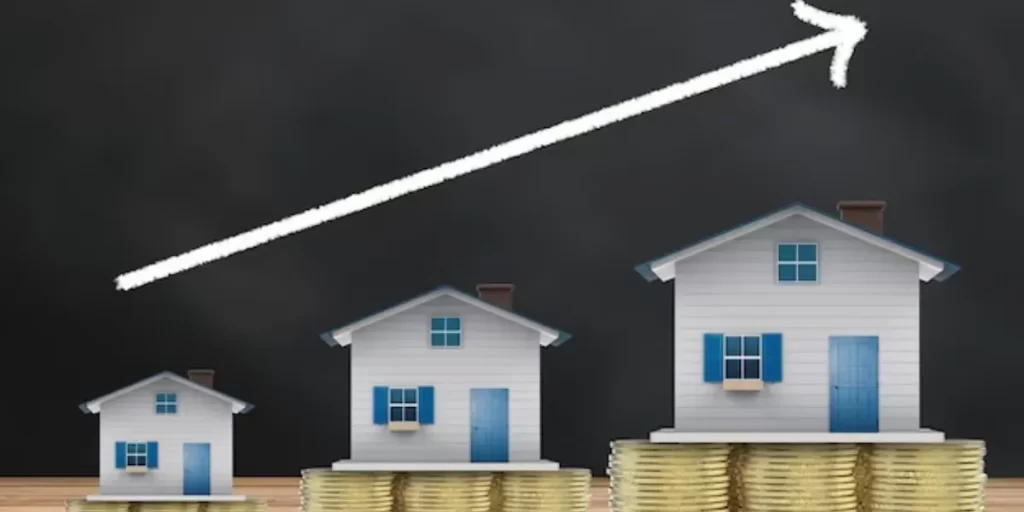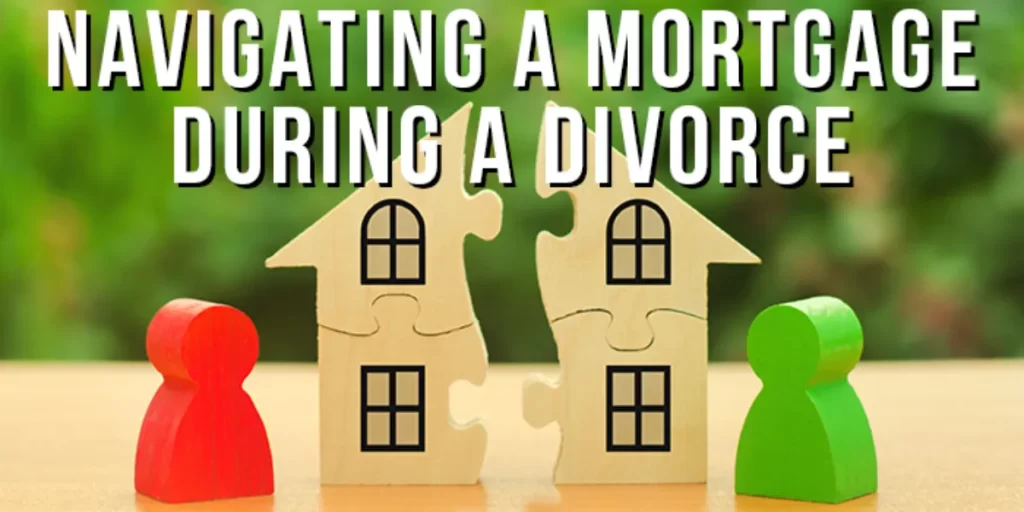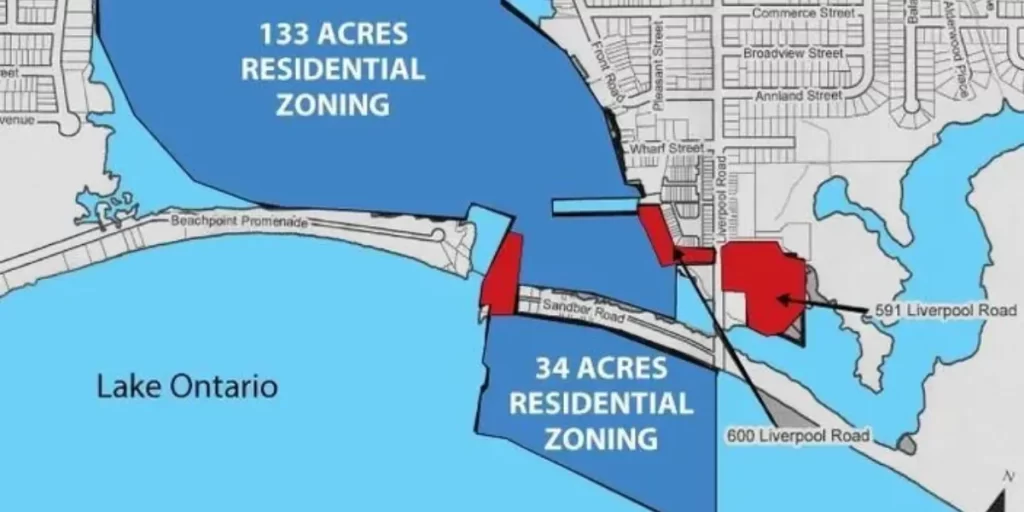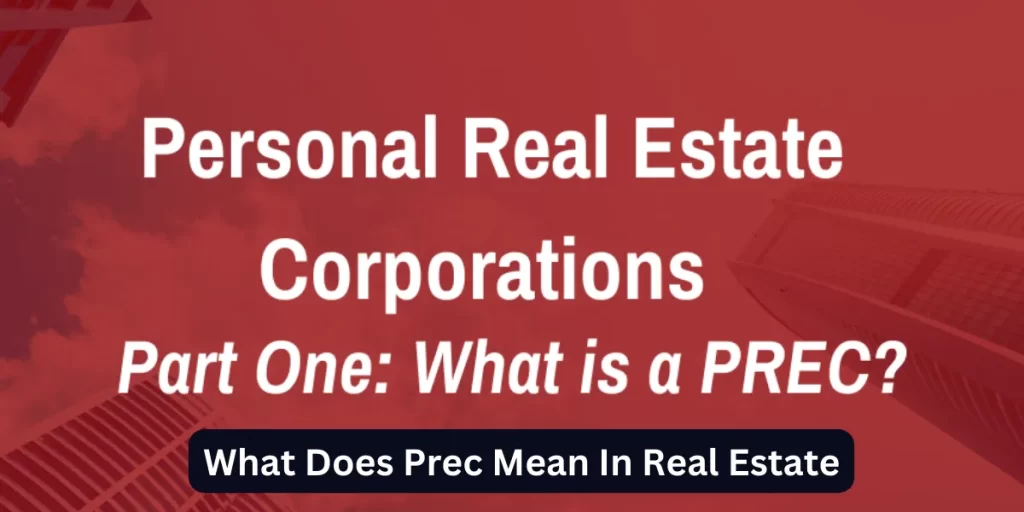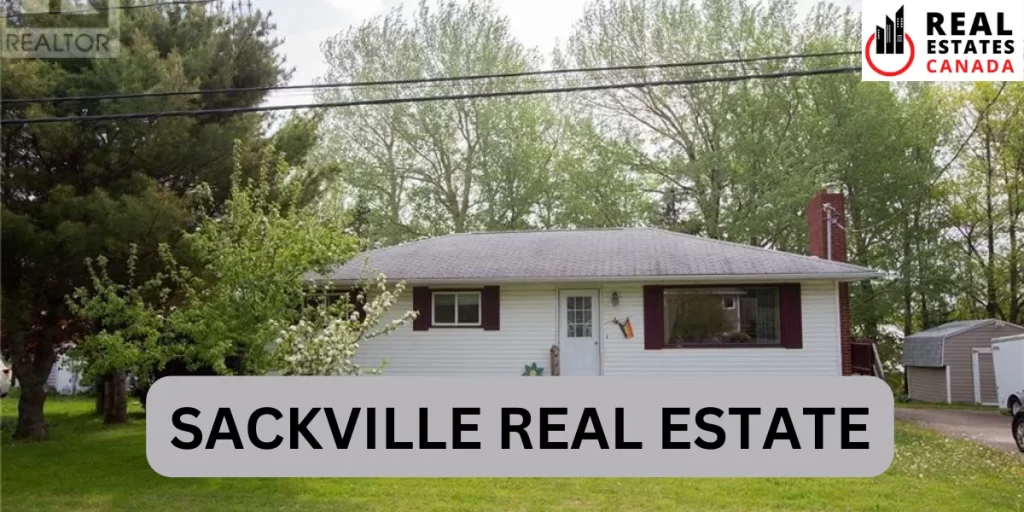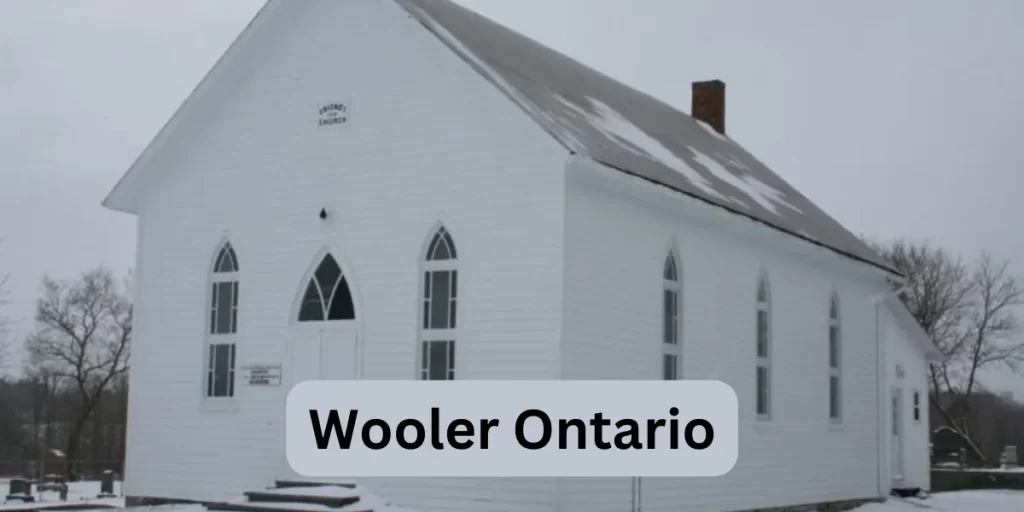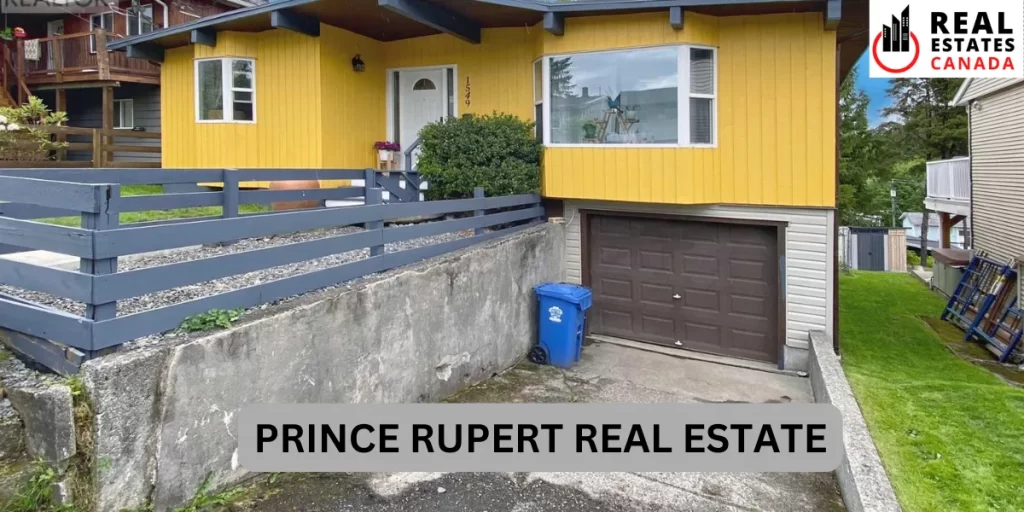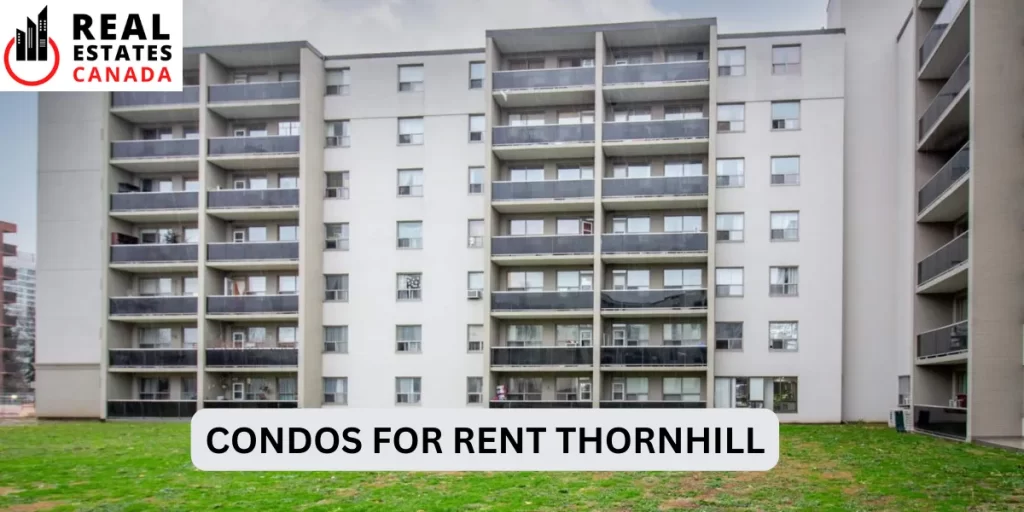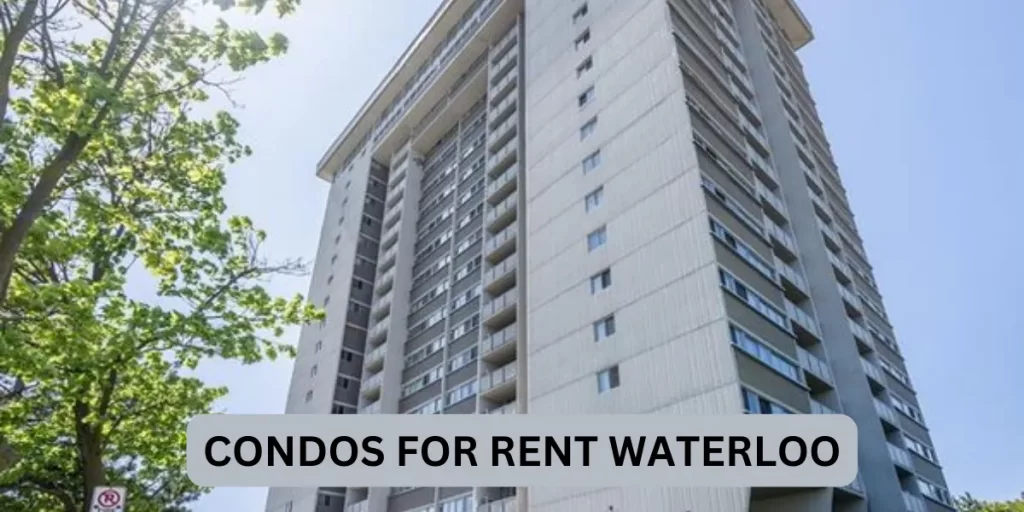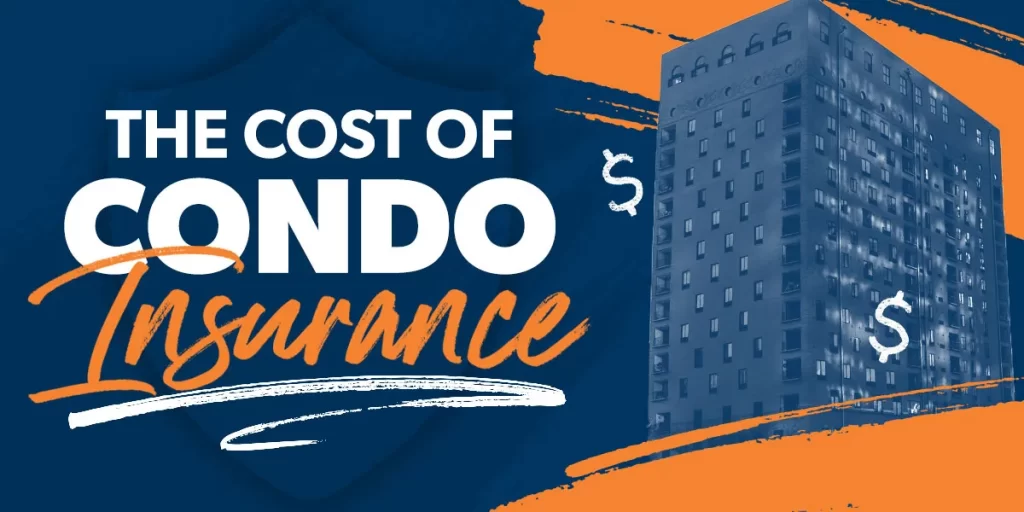Toronto Real Estate: Pools As Hot Market Asset
Jun 26, 2024Top Energy Conservation Solutions Homebuyers Seek
Jun 24, 2024Who Makes Property Lines?
Jun 21, 20245 Thrifty Ways To Make Your Home Feel
Jun 19, 2024How To Avoid Overpaying For A Cottage
Jun 14, 2024Should You Move To A Small Town In
Jun 12, 2024Rising Home Prices Spark Widespread Worry In Canada
Jun 12, 20245 Landscaping Trends That Are On The Rise
Jun 07, 2024How To Prepare Your House For Sale
Jun 05, 2024How To Get Rid Of Ants And Flies
Jun 01, 2024Tips For Hosting A Backyard Party
May 29, 2024Essential Tips for How To Take Great Listing
May 24, 2024How To Stage Your Home During The Holidays
May 22, 2024Tips For Keeping Your Home Cool During Hot
May 20, 2024What Happens At A House Showing? A Professional
May 17, 2024Affordable Ontario Homes: Buy Below $250K Avg Price
May 15, 2024What You Should Do at An Open House
May 13, 2024Turn Your Vacation Home Into A Money-Maker
May 03, 2024How Do You Pay Off Your Mortgage Faster?
May 01, 2024Bank Of Canada Makes Interest Rate Announcement
Apr 29, 2024Canadian Real Estate And Vaccine Passports: What Are
Apr 26, 2024Halifax Man Crosses Item Off Bucket List After
Apr 26, 2024What Canada’s Real Estate Leaders Want From The
Apr 24, 2024Cooler Months Will See Red-Hot Toronto Market
Apr 19, 2024How To Afford Real Estate In Canada
Apr 19, 202410-Step Guide To Selling Your Home
Apr 17, 20249 Features To Look For In A Family
Apr 15, 2024Hidden Costs of Home Ownership
Apr 10, 2024Not Even A Pandemic Can Curb Canada’s Insatiable
Apr 05, 2024Why Do I Need a Real Estate Agent
Apr 03, 2024What Are Condo Fees? 3 Things To Know
Apr 01, 2024Do Staged Homes Sell Faster?
Mar 06, 2024Ontario Housing Task Force: 1.5M Homes Over 10
Mar 05, 2024Canada Housing Market Outlook To 2027 – RE/MAX
Mar 05, 2024What Is Renovation Mortgage Financing?
Mar 05, 2024Liveability Factors When Buying
Mar 04, 202410 Tips For Getting The Best Mortgage Rate
Mar 04, 2024Greater Toronto Housing Market: 25-Year Comparison
Mar 02, 2024NBA All-Star Sweepstakes Presented By RE/MAX
Mar 02, 2024Top Reasons So List Your House At The
Mar 01, 20245 Reasons Your House Is Not Selling
Mar 01, 2024Four Things To Consider When Viewing Houses Online
Mar 01, 2024Top 5 Winter Curb Appeal Tips
Feb 29, 2024Canadian Luxury Real Estate Sales Double, Triple In
Feb 29, 2024What Are The Different Types Of Home Insurance?
Feb 29, 2024Buying A Home After Bankruptcy: What You Need
Feb 28, 2024This Content Isn’t Available Right Now
Feb 28, 2024How The Economy Has Affected Home Buying Plans
Feb 28, 2024Tips To Enhance Your Curb Appeal This Winter
Feb 27, 2024The Art Of Compromise: Home Decor Edition –
Feb 27, 2024Top 5 Mistakes That Sellers Make – RE/MAX
Feb 27, 2024How To Close Your Cottage For The Winter
Feb 26, 2024Cottage Market Still Strong After Pandemic Frenzy
Feb 18, 2024Understanding Property Taxes In Canada – What You
Feb 14, 2024Featured Listing: Luxurious Log Cabin In Sudbury The
Feb 13, 2024Planning to renovate your home? Here’s what you
Feb 13, 2024Three Key Commercial Real Estate Surprises To Avoid
Feb 10, 2024Revocation Of Offer: What It Is And How
Feb 10, 2024What’s Happening In Atlantic Canada Real Estate?
Feb 10, 2024Sold Over Asking: What Does This Mean For
Feb 09, 2024A Look At Four Trends In Multifamily Real
Feb 09, 2024When It Comes To Real Estate, Canadian Boomers
Feb 09, 20245 Detached Homes For Sale In Southern Ontario
Feb 08, 2024Why Is Everyone Moving To Alberta? A Real
Feb 08, 2024What You Need To Know About The Brantford
Feb 08, 2024Most Affordable Major Ontario Real Estate Markets
Feb 07, 2024Buying Foreclosed Properties: What You Need To Know
Feb 05, 2024Subprime Borrowing Accelerates In Canada
Feb 03, 2024Calgary Home Prices Soar
Feb 03, 2024Agents Dish On Home Renovations That Buyers Want
Feb 02, 2024Design Trends For Fall
Feb 02, 2024A Buyer’s Guide To What’s Driving The Housing
Feb 02, 2024Getting Your Home Ready To Sell: A Checklist
Feb 01, 20245 Questions To Ask Yourself Before Buying Or
Jan 31, 2024Buying Your First Home: Are You Ready Financially?
Jan 31, 2024Housing Nearly 40% Of All Of Canada’s GDP
Jan 30, 2024Bathroom Makeover Do’s And Don’ts For Home Value
Jan 30, 2024What Are The Most Popular Types o\Of Real
Jan 30, 2024Canada’s Foreign Buyer Ban Does Not Apply To
Jan 29, 2024A Checklist Before Making An Offer On A
Jan 29, 2024How Google Street View Can Help You Assess
Jan 29, 2024The Role Of Population Growth In Canada’s Housing
Jan 27, 2024Homes For Sale In Toronto: GTA Listings Have
Jan 27, 2024The 6 Most Profitable Canadian Cities For Condo
Jan 26, 20244 Ways To Design A Functional Loft Space
Jan 26, 202454% Of Canadians Think Foreign Buyer Ban Will
Jan 25, 2024Canadians Seeking Diverse Housing Options
Jan 24, 2024Basement Makeover Contest: The Big Reveal
Jan 24, 202415-Minute Neighbourhoods And Canada’s Housing Crisis
Jan 24, 2024Buying A Home When You’re Self-Employed
Jan 23, 2024What Are Pre-Payment Privileges?
Jan 23, 2024Your Guide To Gifted Down Payments
Jan 23, 2024This Is Where You Should Buy Real Estate
Jan 22, 2024What Is A Cashback Mortgage?
Jan 20, 2024Co-Living Spaces On The Rise
Jan 19, 2024Miracle Home Listing
Jan 19, 2024Your Guide To Cottage Country In Ontario
Jan 18, 2024The Impact Of Commute Time On Home Buying
Jan 17, 20248 Tips For A Home That Sparkles
Jan 16, 2024Q2 Respite From Interest Rate Hikes Made Detached
Jan 15, 2024Buying A New Vs. Old Home In Canada
Jan 15, 2024Finding Affordable Houses For Sale In Winnipeg
Jan 13, 2024Canadians Tapping Their HELOC Less This Year
Jan 13, 2024What Is The Difference Between A Home Appraisal
Jan 12, 2024What you need to know about British Columbia’s
Jan 11, 2024Top 5 Summer Curb Appeal Tips
Jan 11, 2024Fall Real Estate Myths
Jan 10, 2024Is the Housing Market Turning Around?
Jan 10, 2024Why Fewer Properties Are Being Listed Right Now
Jan 09, 2024How To Build Your Own House with A
Jan 09, 2024Relocating To A Big City
Jan 08, 2024What Is A Second Mortgage?
Jan 06, 2024Fall Market Myths
Jan 05, 2024North York Real Estate – Houses for Sale
Jan 03, 2024Equity Gains A Factor To Move-up In Winnipeg
Jan 01, 2024Move-up Buyers Active In Vancouver Housing Marke
Dec 29, 2023What Are The Costs Of Home Ownership?
Dec 28, 2023Mortgages And Divorce
Dec 27, 2023What Are Conditions On A Real Estate Offer?
Dec 26, 2023What The Bank Of Canada’s Interest Rate Hikes
Dec 26, 2023How To Get Financing For A Cottage In
Dec 25, 2023What Is Bridge Financing?
Dec 25, 2023What Closing Costs Can You Expect When Buying
Dec 23, 2023How Canadians Envision Their Homes
Dec 23, 20233 Common Pricing Strategies For Selling Your Home
Dec 22, 2023It’s A Great Time To Buy A Recreational
Dec 22, 2023Commercial Real Estate Space In Ottawa Scarce
Dec 21, 2023Canadian Real Estate Is At A Critical Juncture
Dec 21, 2023How To Invest In Real Estate In Toronto
Dec 16, 2023Are First Time Home Buyers In BC Struggling
Dec 15, 2023What Is Home Staging? Is It Worth It?
Dec 15, 20235 Great Cottages For Sale In Ontario
Dec 12, 202320 Terms You Need To Understand Before Signing
Dec 11, 2023A Step-by-Step Guide To Refinance Your Mortgage In
Dec 09, 2023Real Estate Terms: RE/MAX Home Buyer’s Glossary
Dec 08, 2023Is Toronto Real Estate Cheaper Than Vancouver?
Dec 08, 2023As Expected, Bank Of Canada Holds Interest Rate
Dec 07, 2023Is Toronto Real Estate Cheaper Than Vancouver?
Dec 06, 2023” Buying A Home When You’re Self-Employed”
Dec 06, 2023PEI Housing Prices Up For Third Year In
Dec 05, 2023Amenity-Rich Neighbourhoods In High Demand
Dec 05, 2023What Is A Home Energy Audit?
Dec 04, 2023Canadians Shift To Sustainable Homes
Dec 04, 2023What You Need To Know About Canada’s Vacant
Dec 02, 20236 DIY Projects To Upgrade An Old Space
Dec 02, 2023How Is The Housing Market In Winnipeg?
Dec 01, 2023How To Assess The Quality Of Schools When
Dec 01, 2023How Do You Win A Bidding War?
Nov 30, 2023How Do You Make A Low Ball Offer?
Nov 30, 2023How To Buy A New Home In Canada
Nov 29, 20237 Things To Consider Before Buying A House
Nov 29, 2023How Will Higher Interest Rates Affect Me?
Nov 28, 2023The Best Areas With Houses For Sale In
Nov 27, 2023HELOCs And Home Equity Loans: Home Equity Access
Nov 27, 2023Buying Vs. Building A Backyard Shed
Nov 25, 2023A Look At Trends In The Nanaimo Real
Nov 25, 2023Luxury Living: Explore Upscale Houses For Sale In
Nov 24, 2023Land Transfer Tax Impacting Home Buying Decisions
Nov 23, 2023Malls, Plazas Finding Value In Their Parking Lots
Nov 21, 20237 Tips To Make Moving With Kids Easier
Nov 21, 2023Demand For Warehouse Space Surges
Nov 18, 2023Opportunity Still Exists In GTA & Vancouver Real
Nov 18, 2023How Zoning Issues Can Impact Your Commercial Space
Nov 17, 2023How To Navigate Toronto Real Estate As A
Nov 16, 2023RE/MAX® Voted Most Reputable Real Estate Company In
Nov 15, 2023Guide To Mortgage Renewal: How Do I Renew
Nov 15, 2023The Benjamin Moore 2024 Color Of The Year
Nov 15, 2023The Pros And Cons Of Buying Vs. Renting
Nov 14, 2023The Best Neighbourhoods To Look For Houses For
Nov 14, 2023Shopping Malls Changing The Housing Landscape
Nov 13, 2023Restoring Hope. Rebuilding Lives.
Nov 11, 2023Spring Cleaning: Freshen Up, Reduce Allergies
Nov 10, 2023How To Choose The Ideal Location For Your
Nov 10, 2023Canadian Boomer Generation
Nov 09, 2023Put Some ‘Green’ In Your Pocket With An
Nov 07, 2023Easily Find Listings Within A School District
Nov 07, 2023Is The First-Time Homebuyer Incentive Right For You?
Nov 06, 2023Outdoor Fireplaces: What You Need To Know To
Nov 04, 2023What Is The Home Buyers’ Plan?
Nov 04, 2023Get Organized And Improve The Flow Of Your
Nov 03, 2023Despite Record Home Prices, A Significant Number Of
Nov 02, 2023Solving Canada’s Housing Affordability Crisis
Nov 01, 2023Get Matched With Your Perfect Neighbourhood!
Nov 01, 2023Can I Afford A Cottage?
Oct 31, 2023Small Space? You Can Still Have A Home
Oct 30, 2023Tips To Make A Small Room Look Bigger
Oct 27, 2023Back To School: Tips To Maximize Your Entrance
Oct 27, 2023The Homeowner’s Checklist For Fall
Oct 26, 2023Buy Or Rent A Home: Which Is Better
Oct 26, 2023Prices In Canada’s Secondary Cities Continue To Rise
Oct 25, 2023A Huge Piece Of Lake Ontario Is For
Oct 25, 2023How To Get The Most Out Of Your
Oct 24, 2023Featured Listing: Modern Ottawa Lofts Let The Light
Oct 21, 2023Top 10 Tips For Selling Your Home In
Oct 20, 2023How To Keep Your Plants Happy And Healthy
Oct 20, 2023House Prices In Canada’s Ski Regions Set To
Oct 19, 2023New Year’s Resolutions For New Homeowners
Oct 19, 2023The ‘Goldilocks’ Of Ontario Cities, Demand For Homes
Oct 18, 2023Planning To Buy A Home This Spring? Here’s
Oct 18, 2023Create The Perfect Laundry Room
Oct 17, 2023Planning To Renovate Your Home? Here’s What You
Oct 13, 2023Prepare Your Home For The Spring Thaw
Oct 13, 2023What You Need To Know Before Buying Or
Oct 11, 2023Ontario Voters Head To The Polls With Housing
Oct 10, 2023Buying A Condo In The GTA? Expect More
Oct 10, 2023Why Remote Workers Continue To Flock To Sudbury
Oct 09, 2023Home Prices Continued To Rise In Q2 In
Oct 07, 2023How To Keep Your Home Safe While Away
Oct 06, 2023How Much Is Your Home Worth? Introducing Quick
Oct 05, 2023Almost One Third Of Young Canadians Have Altered
Oct 04, 2023Looking To Rent A Place In The City?
Oct 02, 2023More Than Just Storage: Basement Ideas For Better
Oct 02, 2023Carve Out A Space For Your Home Office
Sep 30, 2023Top 5 Tips For First-Time Real Estate Investors
Sep 30, 2023Is Housing A Top Priority Among Voters In
Sep 30, 2023Create Cour Own Space In A Shared Place
Sep 29, 2023Phil Soper Is Storeys’ ‘Top Dog’ Of Ontario
Sep 29, 2023How To Beat The (Work From Home) Winter
Sep 28, 2023How Home Sellers Can Be Successful In A
Sep 28, 2023Get Your Fireplace Ready For Winter
Sep 27, 2023Looking For A Chalet To Escape To This
Sep 27, 20235 Tips For Creating The Perfect Gallery Wall
Sep 26, 2023Holiday Gift Guide For The New Homeowner On
Sep 26, 20235 Interior Design Trends To Watch In 2023
Sep 25, 2023Everything You Need To Know About Toronto’s New
Sep 23, 2023Coast-To-Coast: $1 Million Listings Across Canada
Sep 23, 2023Here’s How Much House $1 Million Can Buy
Sep 23, 2023Decorate Your Home With Ease This Fall
Sep 22, 2023Own A Property In Ottawa? Here’s What You
Sep 22, 2023How To Close Your Cottage For The Winter
Sep 22, 2023How To Make Your Home Pet-Friendly
Sep 21, 2023Saving For Your First Home? Here’S What You
Sep 20, 2023The Dos And Don’Ts Of Staging Your Home
Sep 20, 2023Latest Interest Rate Hike Will Soften Housing Market
Sep 20, 20231 In 4 Canadians Intend To Buy An
Sep 19, 2023Higher Borrowing Rates Pushing Some Gta Invester Out
Sep 19, 2023Tips For Reopening Your Cottage This Spring
Sep 19, 2023Get Your Ticket For The Sweepstakes For Shelter!
Sep 18, 2023Montreal Investors Most Likely To Own Three Or
Sep 18, 2023Investing In Real Estate While Renting A Popular
Sep 18, 2023Tips To Avoid Falling Into The Trap Of
Sep 16, 2023Homebuyers Head West: Edmonton And Calgary Now The
Sep 15, 2023Buying A Home? Inspect The Hvac System First
Sep 14, 20236 Tips For A Seamless Moving Day
Sep 14, 2023Top Paint Colours Of 2023
Sep 14, 2023Should You Buy Or Sell Your Home First?
Sep 13, 2023What Impact Will Rising Interest Rates Have On
Sep 13, 20235 Small Yet Impactful Kitchen Updates You Can
Sep 12, 2023Should You Buy Or Sell Your Home First?
Sep 12, 2023How To Support Your Kids During A Move
Sep 11, 2023Expert Tips On How To Become A Successful
Sep 11, 2023Sold Your Home? Don’t Forget These 4 Important
Sep 11, 2023Do You Need A Realtor To Buy A
Sep 09, 2023Buying A Home In Ontario
Sep 09, 2023How To Get Real Estate License In Alberta
Sep 01, 2023How To Get Real Estate License In Bc
Sep 01, 2023Can a Bank Deny Mortgage Renewal in Canada?
Sep 01, 2023What Is Cac In Real Estate
Aug 31, 2023How Much Commission Do Real Estate Agents Make
Aug 31, 2023What Does A Real Estate Lawyer Do
Aug 31, 2023What Is A Stink Bid In Real Estate
Aug 30, 2023How To Start Real Estate Business In Canada
Aug 30, 2023How To Buy Real Estate With No Money
Aug 30, 2023How To Become A Real Estate Agent Vancouver
Aug 29, 2023What Are Chattels In Real Estate
Aug 29, 2023How Long To Get Real Estate License Ontario
Aug 29, 2023What Does Prec Mean In Real Estate
Aug 28, 2023What Is A Bully Offer In Real Estate
Aug 28, 2023How To Become Real Estate Broker
Aug 28, 2023What Is A Status Certificate In Real Estate
Aug 26, 2023What Is Material Facts In Real Estate
Aug 26, 2023What Is An Assignment Sale In Real Estate
Aug 26, 2023Langley Real Estate
Aug 26, 2023What Is Real Estate Commission In Ontario
Aug 25, 2023How To Buy Commercial Real Estate In Canada
Aug 25, 2023What Is Pds In Real Estate
Aug 25, 2023How To Get Into Real Estate Alberta
Aug 24, 2023What Is Resa In Real Estate
Aug 24, 2023How Much Is A Real Estate License In
Aug 24, 2023How To Start A Real Estate Business In
Aug 23, 2023Is Calgary A Good Place To Invest In
Aug 23, 2023How To Invest 500K In Real Estate In
Aug 23, 2023Real Estate Market Toronto
Aug 22, 2023Real Estate Agent Caledon
Aug 22, 2023Real Estate Law In Canada
Aug 22, 2023Real Estate Services Act
Aug 21, 2023Real Estate Signs
Aug 21, 2023How To Become A Real Estate Agent In
Aug 21, 2023Stoney Creek Condos For Rent
Aug 19, 2023Courtenay Real Estate
Aug 19, 2023Creston Real Estate
Aug 19, 2023Fernie Real Estate
Aug 18, 2023Comox Real Estate
Aug 18, 2023Kenora Real Estate
Aug 18, 2023Kimberley Real Estate
Aug 17, 2023North Vancouver Real Estate
Aug 17, 2023Ontario Real Estate Market
Aug 17, 2023Peterborough Real Estate
Aug 16, 2023Ottawa Real Estate Board
Aug 16, 2023Owen Sound Real Estate
Aug 16, 2023Quesnel Real Estate
Aug 15, 2023Point Roberts Real Estate
Aug 15, 2023Real Estate Broker
Aug 15, 2023Stratford Real Estate
Aug 14, 2023Revelstoke Real Estate
Aug 14, 2023Salt Spring Island Real Estate
Aug 14, 2023Bracebridge Real Estate
Aug 12, 2023Camrose real estate
Aug 12, 2023Whistler Real Estate
Aug 12, 2023Chestnut Park Real Estate
Aug 11, 2023Castlegar Real Estate
Aug 11, 2023Chatham Real Estate
Aug 11, 2023Huntsville Real Estate
Aug 10, 2023Invermere Real Estate
Aug 10, 2023Collingwood Real Estate
Aug 10, 2023Leduc Real Estate
Aug 09, 2023Qualicum Beach Real Estate
Aug 09, 2023Maple Ridge Real Estate
Aug 09, 2023Real Estate Agents Near Me
Aug 08, 2023Real Estate Agent Salary
Aug 08, 2023bucerias Real Estate
Aug 08, 2023Cowichan Valley Real Estate
Aug 07, 2023Galiano Island Real Estate
Aug 07, 2023Dundas Real Estate
Aug 07, 2023Save Max Real Estate
Aug 05, 2023Lillooet Real Estate
Aug 05, 2023Terrace BC Real Estate
Aug 05, 2023Is Real Estate Investment Trusts A Good Career
Aug 04, 2023Greenwood Bc Real Estate
Aug 04, 2023Smiths Falls Real Estate
Aug 04, 2023How Much Do Real Estate Agents Make In
Aug 03, 2023How Many Jobs Are Available In Real Estate
Aug 03, 2023Humber Real Estate Login
Aug 03, 2023Reddit Toronto Real Estate
Aug 02, 2023Real Estate Course Ontario
Aug 02, 2023Parry Sound Real Estate
Aug 02, 2023London Ontario Real Estate Market
Aug 01, 2023Real Estate Sign Posts
Aug 01, 2023Tony K Real Estate
Jul 31, 2023Bayfield Ontario Real Estate
Jul 31, 2023Do You Need Home Insurance For A Condo
Jul 29, 2023Why Are Condos So Cheap
Jul 29, 2023Turner Valley Real Estate
Jul 28, 2023Humber Real Estate
Jul 28, 2023Toronto Real Estate Market
Jul 27, 2023Pinawa Real Estate
Jul 26, 2023Colwood Real Estate
Jul 25, 2023Savary Island Real Estate
Jul 24, 2023Kitsilano Real Estate
Jul 24, 2023Real Estate Woodstock Nb
Jul 23, 2023Real Estate Lawyer Brampton
Jul 22, 2023Wainwright Real Estate
Jul 21, 2023Dominica Real Estate
Jul 21, 2023What Is Rpr In Real Estate
Jul 20, 2023Langford BC Real Estate
Jul 20, 2023Real Estate Bowen Island
Jul 20, 2023Real Estate Trail Bc
Jul 19, 2023Rosedale Real Estate
Jul 19, 2023The Beaches Toronto Real Estate
Jul 18, 2023Camrose Alberta Real Estate
Jul 18, 2023Leduc Alberta Real Estate
Jul 17, 2023Real Estate In Kirkland Lake
Jul 17, 2023Real Estate Prince Edward County
Jul 15, 2023Sackville Real Estate
Jul 15, 2023Commercial Real Estate Lethbridge
Jul 14, 2023Mount Pearl Real Estate
Jul 14, 2023Real Estate Agents Calgary
Jul 13, 2023Real Estate Huntsville Ontario
Jul 13, 2023Real Estate In Oliver Bc
Jul 12, 2023Red Lake Real Estate
Jul 12, 2023Saskatoon Commercial Real Estate
Jul 11, 2023Sherwood Park Alberta Real Estate
Jul 11, 2023Elliot Lake Real Estate
Jul 10, 2023Edmonton Real Estate Pro
Jul 10, 2023Real Estate Midland
Jul 08, 2023Buying Land In Ontario
Jul 08, 2023Baltimore Ontario
Jul 07, 2023Richest Area In Toronto
Jul 07, 2023Average House Price Edmonton
Jul 06, 2023Does A Pool Add Value To A Home
Jul 06, 2023Home Equity Line Of Credit Canada New Rules
Jul 05, 2023Wooler Ontario
Jul 05, 2023Land Transfer Tax Mississauga
Jul 04, 2023How Does Porting A Mortgage Work In Canada
Jul 04, 2023What Is Considered Middle Class In Canada
Jul 03, 2023Wonowon British Columbia
Jul 03, 2023Tallest Building In Ottawa
Jul 01, 2023What To Know Before You Build A House
Jul 01, 2023Vienna Ontario
Jun 30, 2023Sydney Ontario
Jun 30, 2023How To Invest In Real Estate Canada With
Jun 29, 2023Houseboat Rentals Ontario
Jun 29, 2023Cape Breton Real Estate
Jun 28, 2023Canadian Real Estate Market
Jun 28, 2023Kendal Ontario
Jun 27, 2023Bridgetown Nova Scotia
Jun 27, 2023Top 10 Real Estate Development Companies In Canada
Jun 26, 2023How to Buy Rental Property with No Money
Jun 26, 2023Brockville Real Estate
Jun 24, 2023Belleville Real Estate
Jun 24, 2023Williams Lake Real Estate
Jun 23, 2023Vancouver Real Estate News
Jun 23, 2023Sault Ste Marie Real Estate
Jun 22, 2023Parksville Real Estate
Jun 22, 2023Okotoks Real Estate
Jun 21, 2023Medicine Hat Real Estate
Jun 21, 2023Moose Jaw Real Estate
Jun 20, 2023Abbotsford Real Estate
Jun 20, 2023Prince George Real Estate
Jun 19, 2023Squamish Real Estate
Jun 19, 2023Grande Prairie Real Estate
Jun 18, 2023Cochrane Real Estate
Jun 17, 2023Chilliwack Real Estate
Jun 17, 2023Airdrie Real Estate
Jun 16, 2023Winnipeg Real Estate News
Jun 16, 2023Salmon Arm Real Estate
Jun 15, 2023Red Deer Real Estate
Jun 15, 2023Liv Real Estate
Jun 14, 2023Cranbrook Real Estate
Jun 14, 2023Real Estate License Ontario
Jun 13, 2023Real Estate Lawyer
Jun 13, 2023Penticton Real Estate
Jun 12, 2023North Bay Real Estate
Jun 12, 2023Campbell River Real Estate
Jun 10, 2023Thunder Bay Real Estate
Jun 10, 2023Canmore Real Estate
Jun 09, 2023Nanaimo Real Estate
Jun 09, 2023coaldale real estate
Jun 08, 2023Sicamous Real Estate
Jun 07, 2023Port Moody Real Estate
Jun 07, 2023Real Estate Lawyer Toronto
Jun 06, 2023Olds Real Estate
Jun 06, 2023Prince Rupert Real Estate
Jun 05, 2023Arnprior Real Estate
Jun 05, 2023Kincardine Real Estate
Jun 03, 2023Duncan Real Estate
Jun 03, 2023Assyst Real Estate
Jun 02, 2023100 Mile House Real Estate
Jun 02, 2023Calgary Real Estate Market
Jun 01, 2023Real Estate Housing Market Canada
Jun 01, 20231 Bedroom Condo For Rent Milton
May 31, 20231 Bedroom Condo For Rent Oakville
May 31, 20231 Bedroom Condo For Rent Burlington
May 30, 20231 Bedroom Condo Downtown Toronto For Rent
May 30, 2023Waikiki Condos For Rent
May 29, 2023Oakville Condo For Rent
May 29, 2023Condos For Rent Thornhill
May 27, 2023Condos For Rent Peterborough
May 27, 2023Condos For Rent Near Square One
May 26, 2023Condos For Rent Lethbridge
May 26, 2023Condo For Rent Guelph
May 25, 2023Condos For Rent Pickering
May 25, 2023Brampton Condos For Rent
May 24, 2023Barrhaven Condo For Rent
May 24, 2023Aruba Condos For Rent
May 23, 2023Airdrie Condos For Rent
May 23, 20232 Bedroom Condo For Rent Scarborough
May 22, 2023Griffintown Condo For Rent
May 22, 2023Condos For Rent Thunder Bay
May 20, 2023Condos For Rent Red Deer
May 20, 2023Condos For Rent Grimsby
May 19, 2023Aurora Condos For Rent
May 19, 20231 Bedroom Condo For Rent Vaughan
May 18, 2023Yorkville Condos For Rent
May 18, 2023Yonge And Eglinton Condos For Rent
May 17, 2023Regina Condos For Rent
May 17, 2023Palm Springs Condos For Rent
May 16, 2023Condos For Rent Waterloo
May 16, 2023Condos For Rent In Canada Toronto
May 15, 2023What Is Condo In Canada
May 15, 2023Condos For Rent St Catharines
May 13, 2023Condos for Rent Kitchener
May 13, 2023How Much Down Payment For A Condo Toronto
May 12, 2023Do You Pay Property Tax On A Condo
May 12, 2023Condo for Rent Brossard
May 11, 20233 Bedroom Condo For Rent
May 11, 2023Whitby Condos For Rent
May 10, 2023Oshawa Condos For Rent
May 10, 20231 Bedroom Condo For Rent Scarborough
May 09, 2023Windsor Condos For Rent
May 09, 2023Ottawa Condos For Rent
May 08, 2023Pickering Condos For Rent
May 08, 2023Milton Condos For Rent
May 06, 2023Condo For Rent Richmond Hill
May 06, 2023Avoiding Land Transfer Tax Ontario: Expert Tips for
May 05, 2023How Much Is Condo Insurance
May 05, 2023Williams Lake Bc Real Estate
May 04, 2023Winnipeg Real Estate Market
May 04, 2023Condo For Rent Laval
May 03, 2023Condos For Rent Barrie
May 03, 2023Condos For Rent Scarborough
May 02, 2023Markham Condos For Rent
May 02, 2023Can I Transfer My Real Estate License To
May 01, 2023Real Estate Services
May 01, 2023North York Real Estate – Houses for Sale
Feb 19, 2023The Best Neighbourhoods in Toronto to Find Your
Feb 15, 2023Buying a Home: Should You Buy First or
Feb 15, 2023Single Family Homes for Sale in Scarborough: A
Feb 13, 2023Toronto Housing Market Price to Rise in Second
Feb 12, 2023Your Ultimate Guide to First Time Home Buying
Jan 26, 2023Definition of Real Estate Disclosure Statement
A Real Estate Disclosure Statement is a document that outlines important information about a property being sold. It is a legally binding document that provides the buyer with an understanding of the property’s history, conditions, and any potential issues. The disclosure statement is intended to increase transparency between the buyer and seller, and to prevent future disputes.
Purpose of Real Estate Disclosure Statement
The purpose of a Real Estate Disclosure Statement is to provide the buyer with a clear understanding of the property being sold. The statement includes information about the property’s history, any known defects or issues, and any environmental hazards. This information can help the buyer make an informed decision about whether to purchase the property.

Importance of Real Estate Disclosure Statement
The Real Estate Disclosure Statement is an important document for both the buyer and the seller. For the buyer, it provides critical information about the property, which can help them make an informed decision about whether to purchase it. For the seller, the disclosure statement can help protect them from potential legal consequences and disputes. Additionally, the disclosure statement is a legal requirement in many jurisdictions, so failure to provide one can have serious consequences.
The Real Estate Disclosure Statement plays a crucial role in the real estate transaction process in Canada. It is essential for both buyers and sellers to understand its purpose and contents, and to make use of it in order to ensure a smooth and transparent transaction. By doing so, they can minimize the risk of disputes and legal issues, and ensure that the transaction is carried out fairly and effectively.
What is included in a Real Estate Disclosure Statement?
The Real Estate Disclosure Statement is a crucial document that provides information about a property being sold. It is intended to give buyers an idea of what they can expect when they purchase the property. The Real Estate Disclosure Statement includes a range of information, including property history, known defects and issues, environmental hazards, property improvements, and zoning and land-use information. This information helps buyers make an informed decision about the property they are interested in purchasing.
Property history
A Real Estate Disclosure Statement typically includes information about the property’s history. This includes details about any previous owners, the property’s age, and any major events that have taken place on the property. This information is important because it can give buyers an idea of the property’s overall condition and any potential issues that may need to be addressed.
Known Defects and Issues
The Real Estate Disclosure Statement also includes information about any known defects and issues with the property. This can include anything from roof leaks to structural problems. It is important for buyers to know about these issues so that they can factor them into their decision-making process. In some cases, buyers may choose to renegotiate the purchase price based on the information disclosed in the Real Estate Disclosure Statement.
Environmental Hazards
In addition to known defects and issues, the Real Estate Disclosure Statement also includes information about any environmental hazards that may be present on the property. This can include information about lead paint, asbestos, or contaminated groundwater. Buyers need to know about these hazards so that they can take the necessary steps to protect themselves and their families.
Property Improvements
The Real Estate Disclosure Statement also includes information about any improvements that have been made to the property. This can include anything from additions to major renovations. This information is important because it helps buyers understand the value of the property and what they can expect from it.
Zoning and Land-Use Information
Finally, the Real Estate Disclosure Statement includes information about the property’s zoning and land-use information. This includes information about any restrictions or limitations on the property and how it can be used. Buyers need to know this information so that they can determine if the property is suitable for their needs and if it will meet their long-term goals.
Why is it important to have a Real Estate Disclosure Statement?
Having a Real Estate Disclosure Statement is critical for ensuring a successful and stress-free real estate transaction. The statement provides buyers and sellers with valuable information about the property being sold, which helps to minimize the risk of future disputes and misunderstandings. Real Estate Disclosure Statements are becoming increasingly common in the real estate industry, and for good reason.
Legal Requirements
In many areas, a Real Estate Disclosure Statement is a legal requirement. Real Estates Canada emphasizes the importance of following all relevant laws and regulations when selling or purchasing a property. Failure to provide a Real Estate Disclosure Statement can result in severe legal consequences, including lawsuits and financial penalties. As a result, it is essential to ensure that the statement is accurate and complete, and that all necessary information is included.
Protects Buyers and Sellers
A Real Estate Disclosure Statement protects both the buyer and the seller by providing a clear and comprehensive picture of the property being sold. Buyers can use the information in the statement to make informed decisions about whether to purchase the property, and to negotiate the terms of the sale if necessary. Sellers, on the other hand, can use the statement to minimize their risk of future legal disputes by disclosing any known issues or defects with the property.
Prevents Future Disputes
One of the primary benefits of a Real Estate Disclosure Statement is that it can help to prevent future disputes. By providing detailed information about the property, buyers and sellers can avoid misunderstandings and potential legal battles down the road. This can help to ensure a smoother and more stress-free real estate transaction for both parties.
Increases Transparency and Trust
A Real Estate Disclosure Statement also helps to increase transparency and trust between buyers and sellers. By providing a clear and comprehensive picture of the property, the statement helps to build trust between the parties, which can make the real estate transaction process much smoother and more efficient. Additionally, by ensuring that all relevant information is disclosed, a Real Estate Disclosure Statement helps to promote fairness and integrity in the real estate market.
Who is responsible for providing the Real Estate Disclosure Statement?
When it comes to the Real Estate Disclosure Statement, the responsibility is shared among the seller, the buyer, and the real estate agent. The Real Estate Disclosure Statement is an important document in the real estate transaction process and it is crucial to understand who is responsible for providing it.
Seller’s Responsibility
The seller is primarily responsible for providing the Real Estate Disclosure Statement to the buyer. This statement provides information about the property’s history, known defects and issues, environmental hazards, property improvements, and zoning and land-use information. The seller must be truthful and accurate in the information provided in the Real Estate Disclosure Statement. Failing to disclose important information can result in legal consequences and financial implications. It is the seller’s responsibility to ensure that the Real Estate Disclosure Statement is provided to the buyer before the sale is complete.
Buyer’s Responsibility
While the seller is responsible for providing the Real Estate Disclosure Statement, the buyer also has a responsibility in the process. The buyer must carefully review the Real Estate Disclosure Statement and ask for clarification on any information that is unclear or incomplete. The buyer should also conduct their own inspections and research to verify the information provided in the Real Estate Disclosure Statement. The buyer is responsible for understanding the condition of the property and its potential risks before making a decision to purchase.
Real Estate Agent’s Responsibility
Real estate agents play a crucial role in the real estate transaction process, including the Real Estate Disclosure Statement. The real estate agent is responsible for ensuring that the Real Estate Disclosure Statement is provided to the buyer and that the buyer has a clear understanding of the information contained in the document. The real estate agent may also advise the seller on what information should be included in the Real Estate Disclosure Statement and how to prepare it. In addition, the real estate agent is responsible for mediating any disputes that may arise between the buyer and the seller regarding the Real Estate Disclosure Statement.
What happens if the Real Estate Disclosure Statement is not provided?
If a Real Estate Disclosure Statement is not provided during the sale process, it can have several negative consequences. It is crucial for the seller to provide a Real Estate Disclosure Statement in order to protect themselves from potential legal issues and to ensure the sale process runs smoothly.
Legal Consequences
In Canada, the law requires that the seller provide a Real Estate Disclosure Statement to the buyer. If the seller fails to do so, they may be held liable for any issues or defects with the property that were not disclosed. This could result in legal action being taken against the seller and potentially costly settlements or judgments.
Financial Implications
In addition to the legal consequences, failing to provide a Real Estate Disclosure Statement can also have financial implications. The buyer may seek compensation for any undisclosed issues or defects with the property, which could result in significant financial loss for the seller. The lack of a Real Estate Disclosure Statement can also make it difficult to sell the property in the future, as potential buyers may be wary of any undisclosed issues.
Impact on the Sale Process
If a Real Estate Disclosure Statement is not provided, it can have a negative impact on the sale process. The sale process may be delayed or even derailed if the buyer discovers an issue with the property and takes legal action against the seller. This can result in a lengthy and costly process for both the buyer and the seller. The absence of a Real Estate Disclosure Statement can also decrease trust and transparency in the sale process, making it difficult for both parties to reach an agreement.
How to prepare a Real Estate Disclosure Statement?
Preparing a Real Estate Disclosure Statement is a crucial step for both buyers and sellers in the real estate transaction process. The statement provides a comprehensive overview of the property’s history, condition, and any potential issues that the buyer should be aware of before making a purchase. Real Estates Canada recommends following these steps to ensure a complete and accurate Real Estate Disclosure Statement is provided.
Gather necessary information
The first step in preparing a Real Estate Disclosure Statement is to gather all relevant information about the property. This includes information about the property’s history, any known defects or issues, environmental hazards, property improvements, and zoning and land-use information. This information can be obtained from various sources such as the property’s title report, building inspections, and environmental assessments.
Organize the information into a clear format
Once all the necessary information has been gathered, the next step is to organize it into a clear and concise format. Real Estates Canada suggests using a standard disclosure form that includes all the necessary sections and provides a clear and consistent structure for the information. This will ensure that the information is presented in a manner that is easy for the buyer to understand and reduces the likelihood of any misunderstandings.
Seek legal advice if necessary
It is important to seek legal advice when preparing a Real Estate Disclosure Statement. A real estate attorney can assist in ensuring that the statement complies with all applicable laws and regulations and that all necessary information is included. Additionally, a real estate attorney can provide guidance on potential legal issues that may arise in the transaction and advise on the best course of action to address them.
Real Estate Disclosure Statement plays a crucial role in the real estate transaction process. It provides buyers and sellers with important information about the property, ensuring that all parties involved are fully informed and aware of any potential issues or defects. This document increases transparency and helps to prevent future disputes, making it an essential component of any real estate transaction.
Summary of Key Points
The key points to remember about Real Estate Disclosure Statement include:
- It is a document that outlines the history, defects, and other important information about a property.
- It is the responsibility of the seller to provide a Real Estate Disclosure Statement, but buyers also have a role to play in ensuring that they receive one.
- Real Estate Disclosure Statement is legally required and protects both buyers and sellers in a real estate transaction.
- Not providing a Real Estate Disclosure Statement can have legal and financial consequences.
Final Thoughts on Real Estate Disclosure Statement
It is important to remember that the Real Estate Disclosure Statement is a critical document in any real estate transaction. By providing a clear and comprehensive overview of the property, it helps to build trust between buyers and sellers and makes the transaction process smoother and more straightforward. Real Estate Canada encourages all parties involved in a real estate transaction to make use of this important document.
Encouragement to make use of Real Estate Disclosure Statement
Real Estate Canada strongly encourages all parties involved in a real estate transaction to make use of the Real Estate Disclosure Statement. This document is designed to protect both buyers and sellers, providing them with important information about the property and reducing the risk of disputes. Whether you are buying or selling a property, taking the time to review and understand the Real Estate Disclosure Statement is an essential step in the process.





















































































































